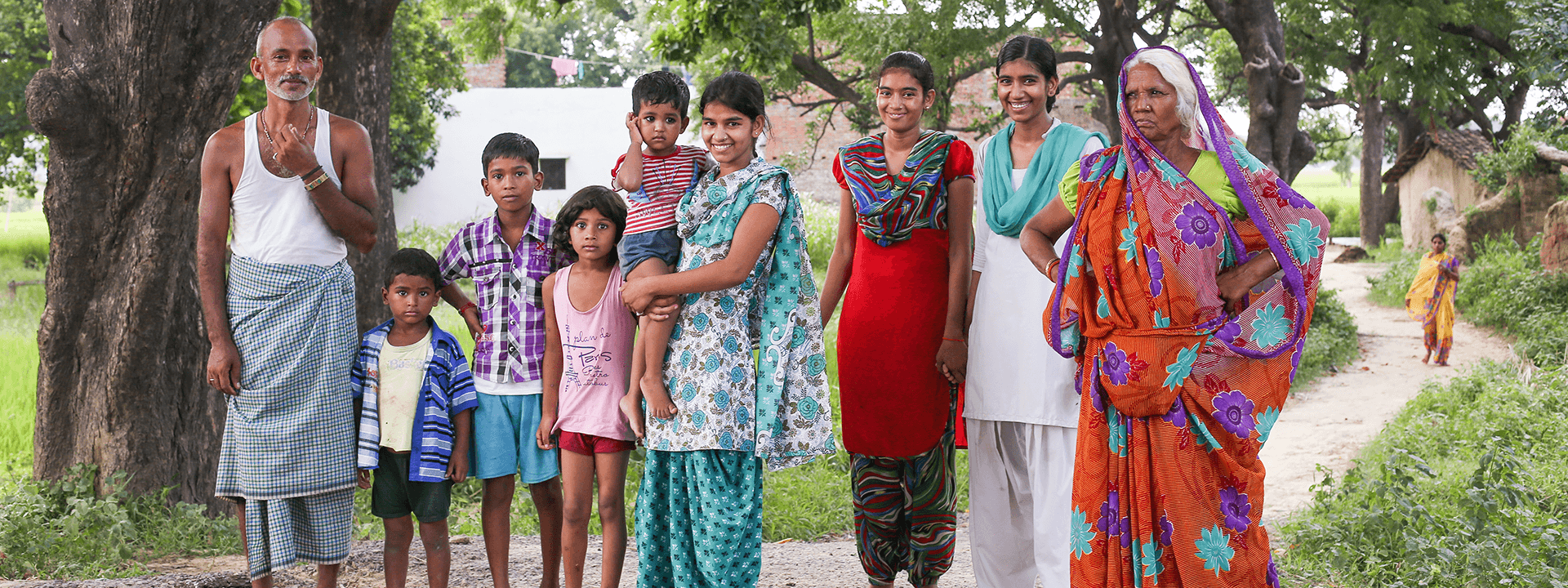
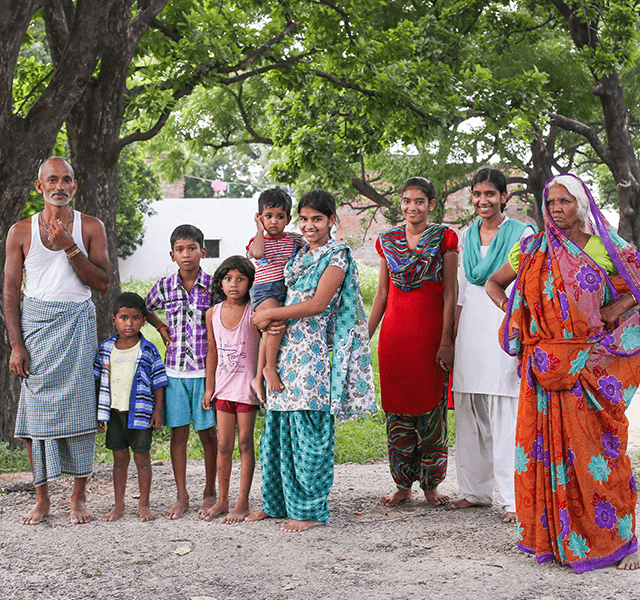
shortfall in public health systems1
increase in doctor to population ratio from 1/1681 (2015-16) to 1/1456 (2019-20)2
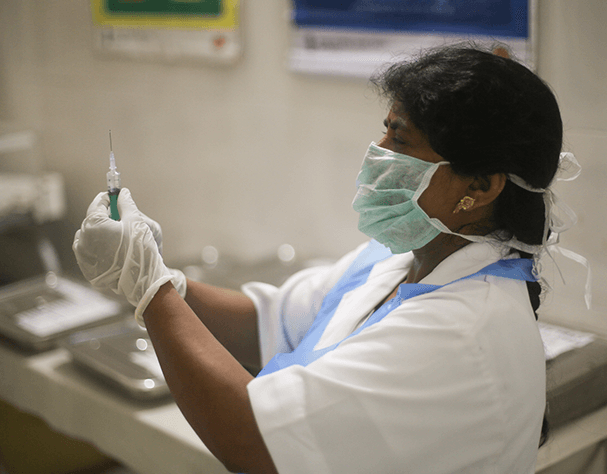
Indians without regular access to essential medicines3
PMBJP Kendra dispensing affordable medicines & surgical supplies established across the country4
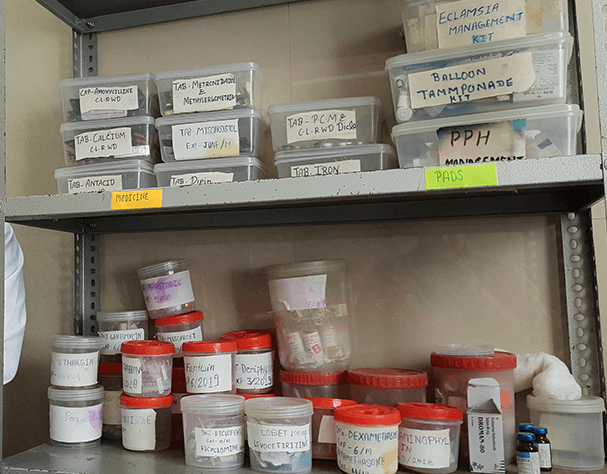
Overall care and
Inpatient care
delivered through private sector and informal providers5
Over
Public facilities added in rural areas between 2005 and 20192
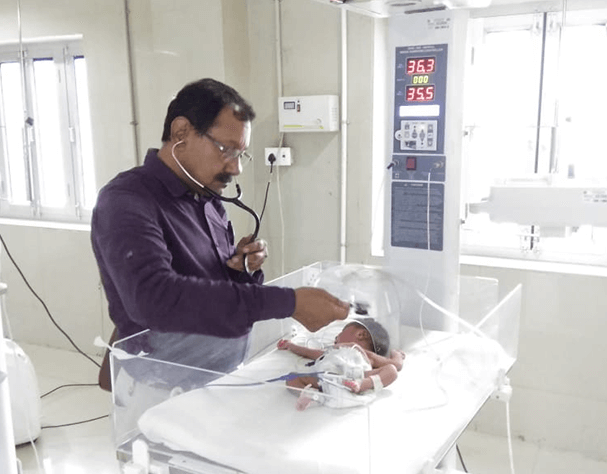
of total health expenditure is out of pocket expenditure6
citizens provided financial protection from catastrophic health expenses through PMJAY7
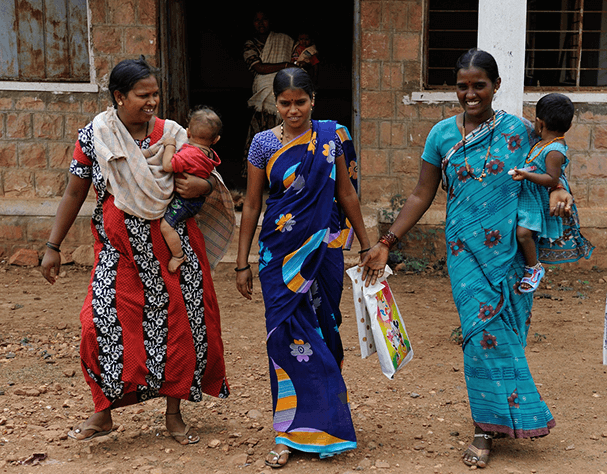
Achieve universal health coverage, including financial risk protection, access to quality essential health-care services and access to safe, effective, quality and affordable essential medicines and vaccines for all.
Substantially increase health financing and the recruitment, development, training and retention of the health workforce.
In collaboration with the University of Manitoba, we are dedicated to supporting the Government of Uttar Pradesh & Madhya Pradesh to strengthen their public health systems. We work together to identify bottlenecks in health systems, streamline process and advocate evidence-informed health policy changes to make the public health systems more responsive and effective.
We support in strengthening systems that enable availability of real-time accurate information on the entire health workforce.
We advocate for policies to address key issues related to availability of critical HR through improvement in recruitment and transfer processes, developing plans for effective task shifting, and in developing effective performance management systems.
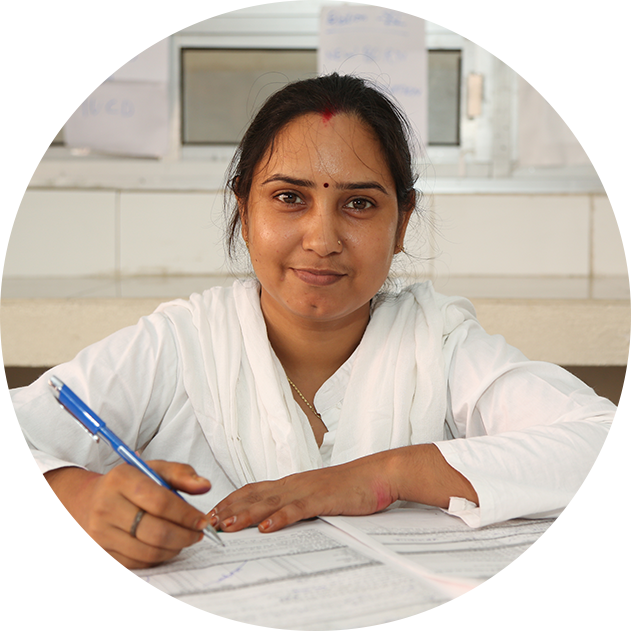
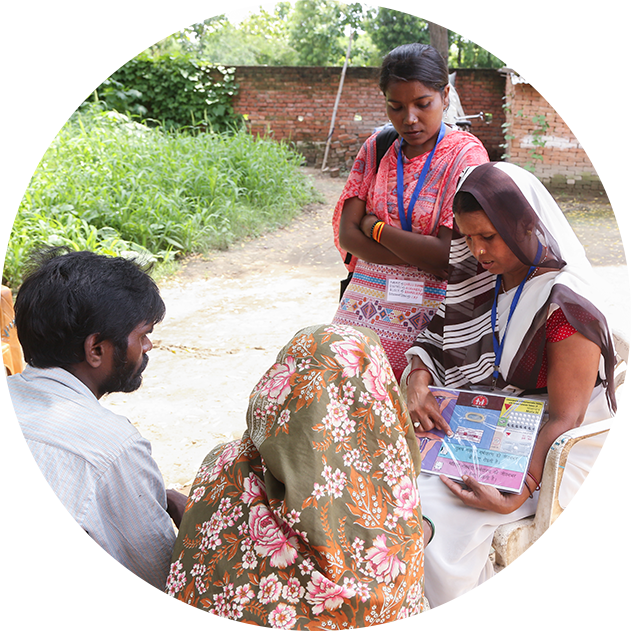
We support the establishment and operationalisation of an institutional mechanism for procurement and distribution of quality equipment, drugs and supplies.
We support the roll out and strengthening of Logistics Management Information System to monitoring availability of drugs and commodities to ensure access to essential service and medicines.
We support in generation of timely information and evidence for decision making. We work towards improving quality of data collected on the Health Information Management Systems and other government data systems by establishing institutional mechanism for auditing the quality of data.
We further support the government to make informed decisions on programs and policies through quantitative and qualitative surveys.
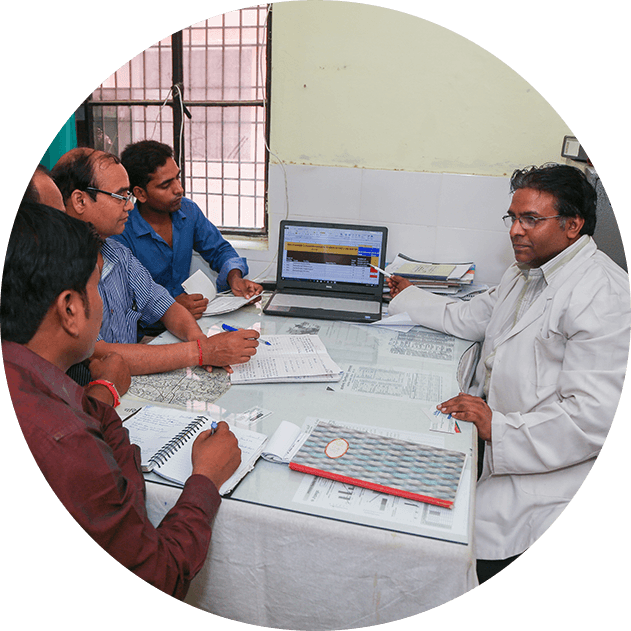
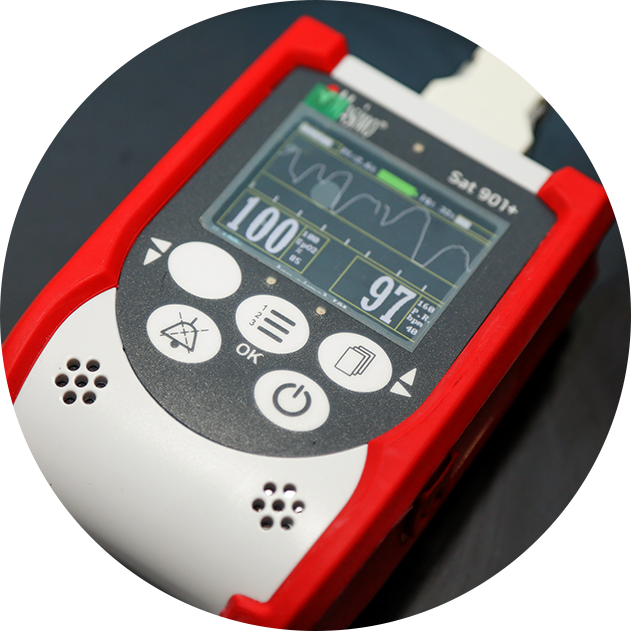
We support the development of comprehensive digital health strategy and in roll out of Information Technology enabled solutions to streamline transactional processes, to improve data quality through data capture at source, for development of integrated systems for enabling primary health care and to disseminate real time information through health dashboards to improve efficiency of the health system.
We support in leveraging the private sector in augmenting the public sector for provision of essential health services through Public Private Partnerships. IHAT supports the contract management process and establishing mechanism for oversight of the partnerships.
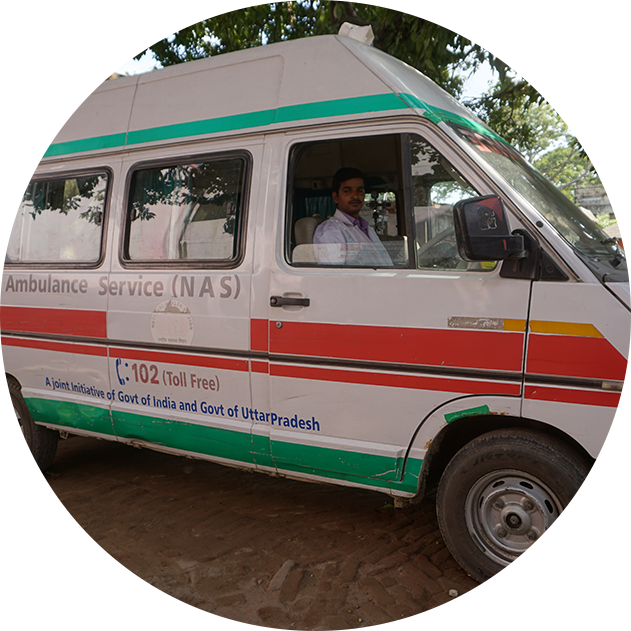
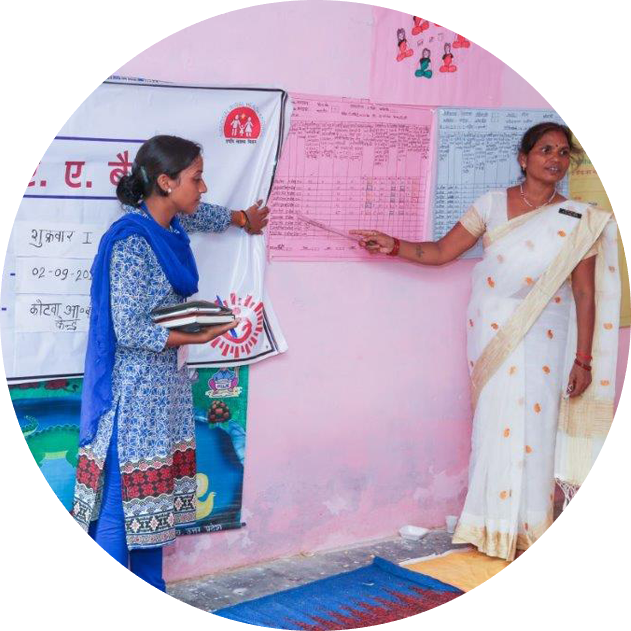
Support in developing effective strategies for behaviour change communication and for translating best practices into programs at large scale.

Primary Health Centres (PHCs) are the backbone of rural healthcare, serving as the first point of care for communities. In Uttar Pradesh, uneven distribution and high vacancy rates of Medical Officers (MOs) undermined their effectiveness. To address this, MO deployment was rationalized. This document outlines the approach, outcomes, and policy relevance of the exercise to strengthen workforce distribution in the health sector.
Read More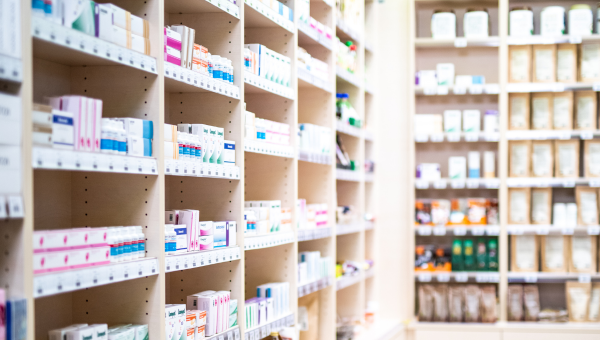
This paper highlights the redesign of Uttar Pradesh’s medicines supply chain through lessons adapted from Tamil Nadu’s Medical Supplies Corporation. By establishing seven foundational pillars—including centralized procurement, quality control, warehousing, and digital e-tracking—the Uttar Pradesh Medical Supplies Corporation strengthened system efficiency, accountability, and medicine availability, offering valuable insights for other Indian states and similar global contexts.
Read More
To tackle high neonatal mortality rate (NMR) in Uttar Pradesh due to Respiratory Distress Syndrome (RDS) which is also a leading factor, Government of Uttar Pradesh (GoUP) rolled out the implementation of b-CPAP across SNCUs across the state in a phased manner, starting with 32 units, and supported by a detailed action plan and coordination with various stakeholders.
Read More1 Access Barriers to Antibiotics, CDDEP
2 Rural Health Statistics 2019: Doctor Population Ratio
3 The World Medicines Situation Report 2011, WHO
4 Pradhan Mantri Bhartiya Jan Aushadhi Pariyojana
5 Key Indicators of Social Consumption – Health, NSS 75th Round
6 Rural Health Statistics 2020: Number of SCs, PHCs & CHCs Functioning in Rural Areas
7 WHO Health Financing Profile 2017
8 Ayushman Bharat Pradhan Mantri Jan Arogya Yojana, Public Dashboard: Number of Hospitalizations